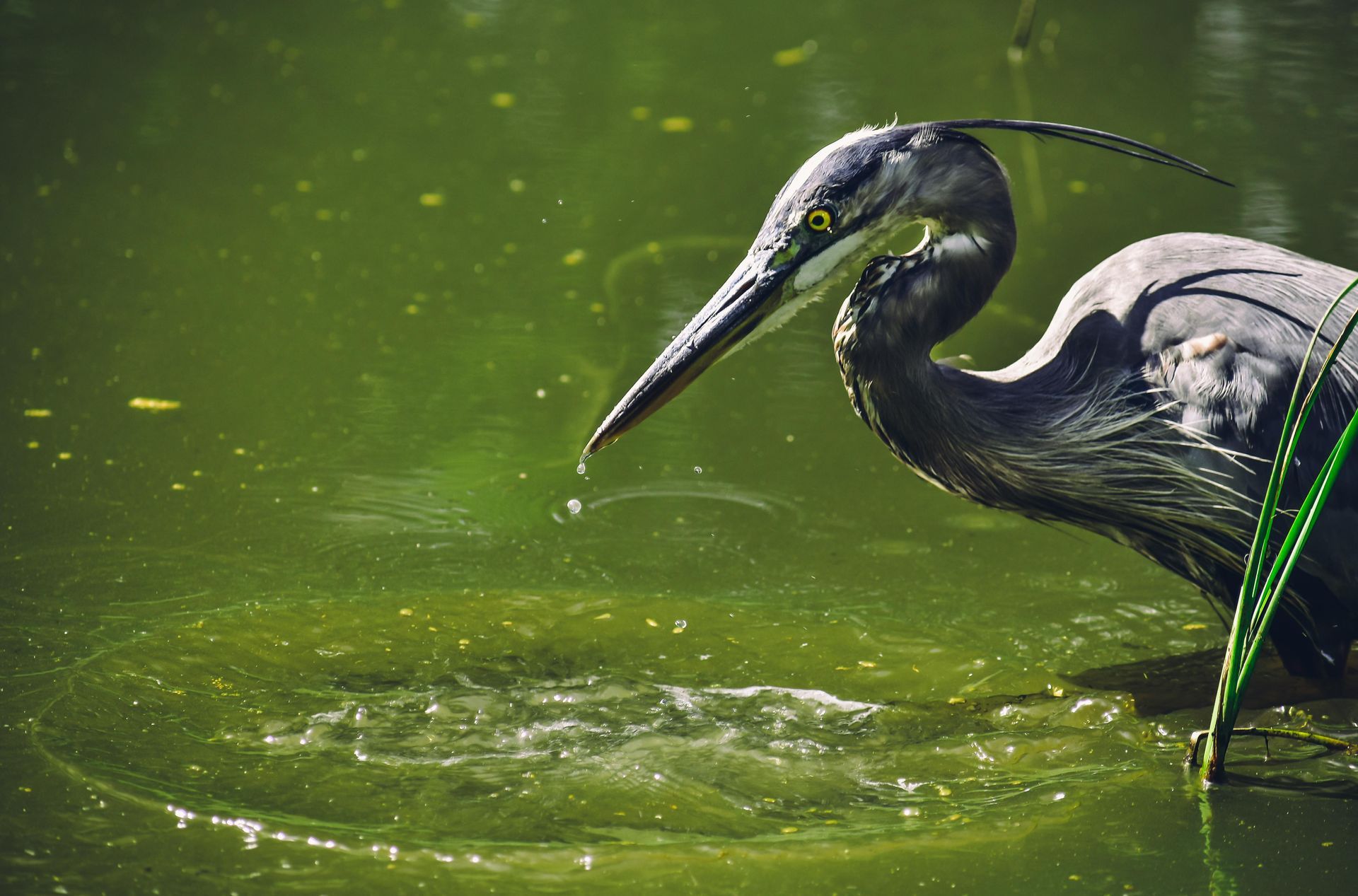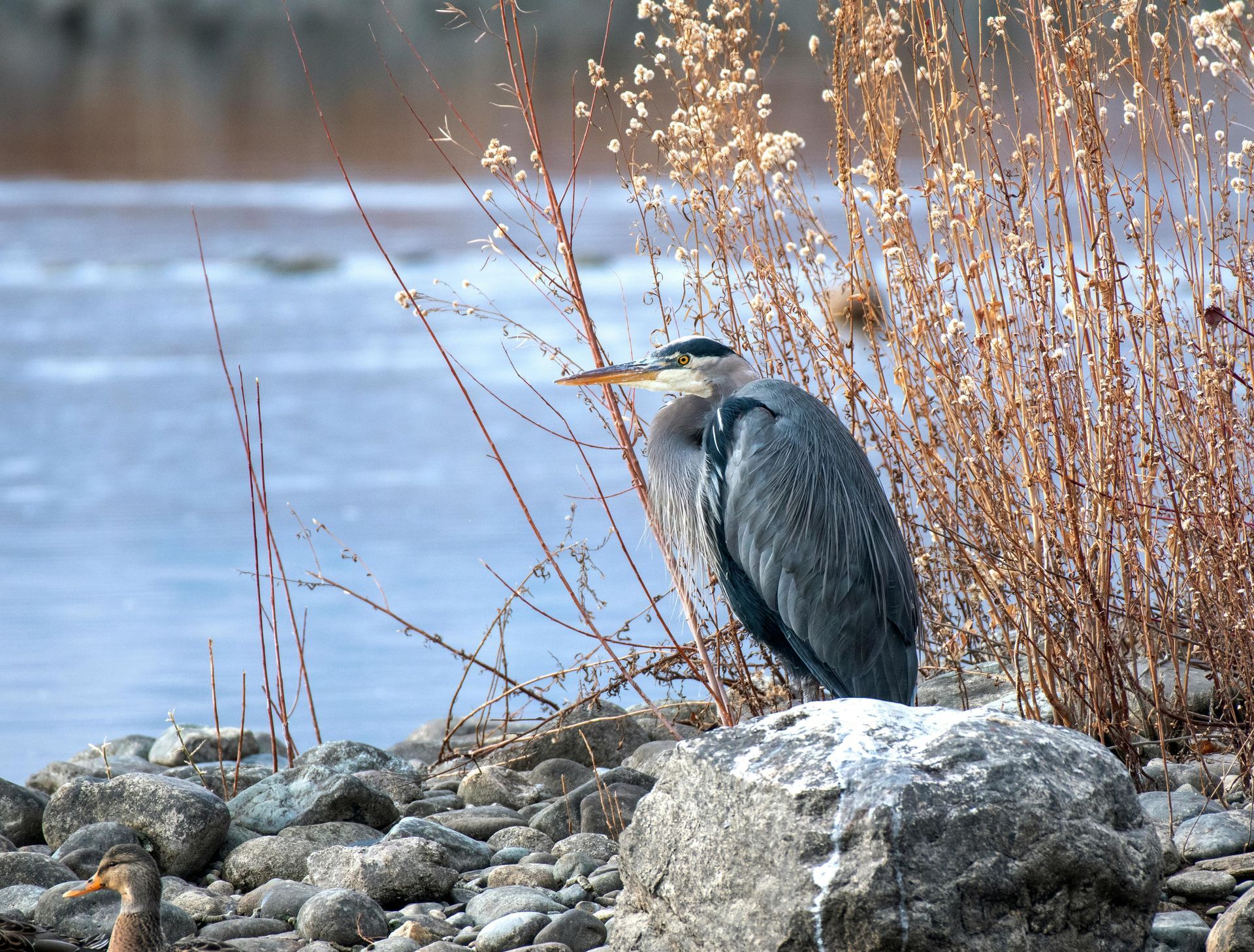Herons are tall, wading birds known for their long legs, graceful necks, and sharp beaks, which they use to catch fish and small aquatic creatures. Found in wetlands, marshes, rivers, and coastal areas worldwide, they play a vital role as top predators in aquatic ecosystems, helping balance fish populations.
Most herons range from 20 to 50 inches in height, with wingspans up to 6 feet. Their plumage varies by species, typically in shades of gray, blue, or white. Notable species include the Great Blue Heron (North America's largest) and the Snowy Egret, recognized for its striking white feathers and yellow feet.
Herons are solitary hunters, using patience and precision to catch prey in shallow waters, primarily fish, amphibians, and crustaceans. They nest in large colonies, called rookeries, near water, with both parents incubating eggs and feeding the chicks.
Natural predators include raccoons, foxes, and large birds of prey. Human-related threats, such as habitat loss, pollution, and fishing gear entanglement, also impact their populations.

For your safety and the well-being of wildlife, please observe animals from a distance and avoid touching or disturbing them. If you encounter an animal that appears injured or in distress, contact a licensed wildlife rescue organization for guidance before intervening.
Found An Animal? Not sure how to help a wild animal in need? Learn when to step in, who to call, and how to help safely.
Did You Know?
- Herons can strike at prey with lightning-fast precision, using their long necks as a spring mechanism.
- The Great Blue Heron has a special adaptation called powder down, which helps keep its feathers clean and waterproof.
- Herons often stand motionless for long periods, waiting for the perfect moment to strike their prey.
- Some herons, like the Green Heron, use tools—dropping insects or leaves on the water’s surface to lure fish.
- During courtship, herons perform elaborate displays, including bill duels and twig presentations.
- Juvenile herons have different plumage than adults, which helps them blend into their surroundings.
- Herons can retract their necks into an S-shape during flight, giving them a distinctive silhouette.
- They are excellent flyers and can travel long distances between feeding and nesting sites.
- Herons communicate using a range of croaks, squawks, and other vocalizations, especially during the breeding season.
Problems Faced In The Wild
- Habitat Loss: Wetland drainage and urban development reduce critical feeding and nesting areas.
- Pollution: Contaminants in water sources harm herons and reduce prey availability.
- Fishing Gear Entanglement: Discarded fishing lines and nets pose significant risks.
- Climate Change: Rising temperatures and altered rainfall patterns affect wetland ecosystems.
- Human Disturbance: Recreational activities can disrupt nesting colonies and cause stress.
- Predation: Eggs and chicks are vulnerable to predators such as raccoons and foxes.
Tips For Cohabitation
- Preserve Wetlands: Support conservation efforts to protect natural water sources.
- Reduce Water Pollution: Minimize chemical runoff and avoid using harmful fertilizers.
- Dispose of Fishing Gear Properly: Prevent entanglement by keeping fishing areas clean.
- Avoid Disturbing Nesting Sites: Keep a safe distance from heron colonies during the breeding season.
- Plant Native Vegetation: Create natural buffers around ponds and wetlands to provide shelter.
- Educate Others: Share the importance of herons in maintaining healthy aquatic ecosystems.



